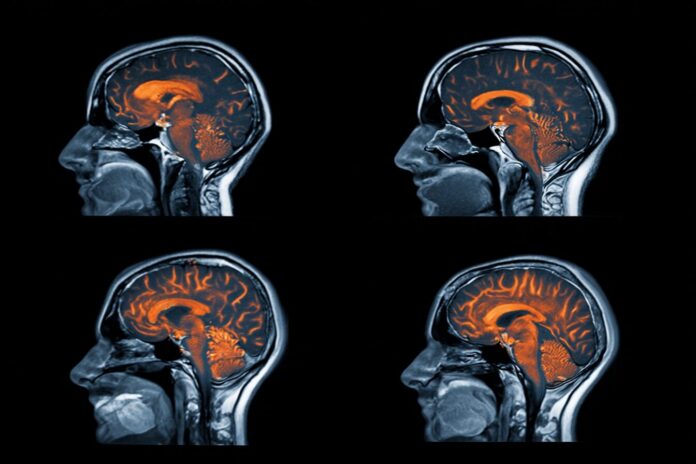Obsessive–compulsive disorder (OCD) has long been recognized as a complex mental health challenge, with symptoms that vary widely among affected individuals. Most importantly, recent advances in neuroscience have uncovered distinct neural signatures that are revolutionizing our understanding of this debilitating disorder. Because these findings shed light on the underlying biology of OCD, they are opening doors to more targeted and effective treatments.
In addition, breakthroughs in neuroimaging and direct neural recordings have provided concrete evidence of abnormal brain activity patterns during different phases of OCD. This discovery is not only clinically significant but also builds an important bridge between behavior and biology. Therefore, the integration of these findings into clinical practice marks a turning point in both diagnosis and therapy.
Understanding OCD Through Brain Activity
OCD is widely recognized as a mental health condition that affects millions worldwide, often leading to repetitive behaviors and intrusive thoughts that negatively impact daily life. Most importantly, early research focused on behavioral symptoms, but the recent surge in neuroimaging techniques has provided a window into the brain’s workings. Because these methods allow researchers to visualize real-time brain activity, they offer new insights that go beyond the observable symptoms.
Furthermore, multiple studies have shown that unique neural biomarkers can be identified during episodes of obsession, compulsion, and subsequent relief. For example, a landmark study by a research team from the University of Amsterdam used implanted electrodes to track neural signals in chronic OCD patients as they cycled through different states. This method not only established baseline brain activity but also highlighted shifts during symptomatic phases. As detailed in research reports from ScienceAlert and other sources, these observations give us a deeper understanding of the disorder.
The Nature of OCD’s Distinct Neural Patterns
Recent studies consistently point toward the cortico-striato-thalamo-cortical loop as critical in the manifestation of OCD symptoms. Most importantly, the anterior cingulate cortex (ACC), orbitofrontal cortex (OFC), and the caudate nucleus stand out as pivotal regions involved in cognitive control, emotional regulation, and habitual behavior. Because overactivation in these areas has been linked with heightened awareness of compulsions, it provides a neural explanation for why symptoms can become so entrenched in the brain’s circuitry.
Besides that, brain imaging research demonstrates that while some areas such as the ACC, insula, and parts of the caudate nucleus show increased activity during emotional tasks, other regions like the medial prefrontal cortex remain underactive. This distinct separation between overactivation and underactivation during compulsive behavior episodes is groundbreaking. Therefore, by comparing these differences, clinicians can gain a more objective metric for diagnosing and measuring the severity of OCD. References from both PMC and Wikipedia support this division in brain activity.
Clinical Significance and Future Treatment Directions
Most notably, the discovery of these unique neural patterns is providing a fresh perspective on how OCD can be treated. Because traditional therapies sometimes fall short, especially in severe cases, clinicians are now looking at deep brain stimulation (DBS) as a potential game changer. DBS involves the implantation of electrodes, which not only monitor but also modulate abnormal neural circuits directly related to OCD symptoms. As described in findings by Texas Children’s Hospital, this approach is being rigorously tested to improve outcomes in treatment-resistant patients.
In addition, the ability to track changes in neural activity offers a significant step forward in personalized medicine. Therefore, by observing how brain patterns shift during treatment, clinicians can better assess whether a patient is responding to an intervention. Most importantly, this method promises tailored therapeutic strategies based on distinct neural signatures, rather than one-size-fits-all approaches. As research advances, it is anticipated that neuroimaging may become a routine part of OCD diagnosis and treatment planning.
Complexity in Brain Regions and Behavior
The relationship between abnormal brain activity and the behavioral symptoms of OCD remains intricate. Most importantly, while some neural patterns are clearly linked to specific tasks such as compulsive grooming or reversal learning, they may not be uniformly affected by pharmacological treatments like fluoxetine. Therefore, understanding the full spectrum of neural behavior in OCD is critical for developing more refined treatment strategies.
Because different cognitive and behavioral tests elicit varied patterns of brain activity, clinicians are working to map these responses very precisely. Besides that, this research adds a layer of complexity to our understanding of OCD, necessitating multifaceted treatment options that address the distinct aspects of the disorder. Researchers at the University of Pittsburgh, for example, have identified patterns of neural activity related specifically to compulsive behaviors, providing a clearer picture of how these symptoms develop and persist.
Implications for Diagnosis and Advocacy
The discovery of brain-based biomarkers has far-reaching implications, not only for diagnosis but also for advocacy. Most importantly, when the biological roots of OCD are clearly established, the stigma associated with the disorder can be reduced. Because observable neural patterns provide an objective measure of the condition, these findings help separate fact from misconception, making a robust case for the biological underpinnings of OCD.
Furthermore, objective biomarkers can drive the development of more precise screening tools, early intervention programs, and tailored medications. Therefore, as these biomarkers are validated through further research, they will likely become integral to clinical practice. In this way, neuroscience not only enhances our understanding but also fosters a more compassionate approach to patient care. This approach is also supported by research available from sources like Texas Children’s.
Further Reading and Resources
For those interested in exploring more about this groundbreaking research, a range of resources is available. Most importantly, the seminal articles and studies provide not only detailed methodologies but also discussions on how these neural patterns were identified. Because continuous research is crucial, staying updated with current findings can help clinicians, researchers, and patients alike.
In addition, reputable sources such as ScienceAlert, PMC, and University of Pittsburgh offer further details on the complex neural circuits involved. Therefore, both academic communities and the wider public can benefit from these in-depth explorations into the neural basis of OCD.



